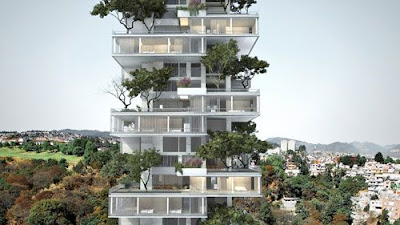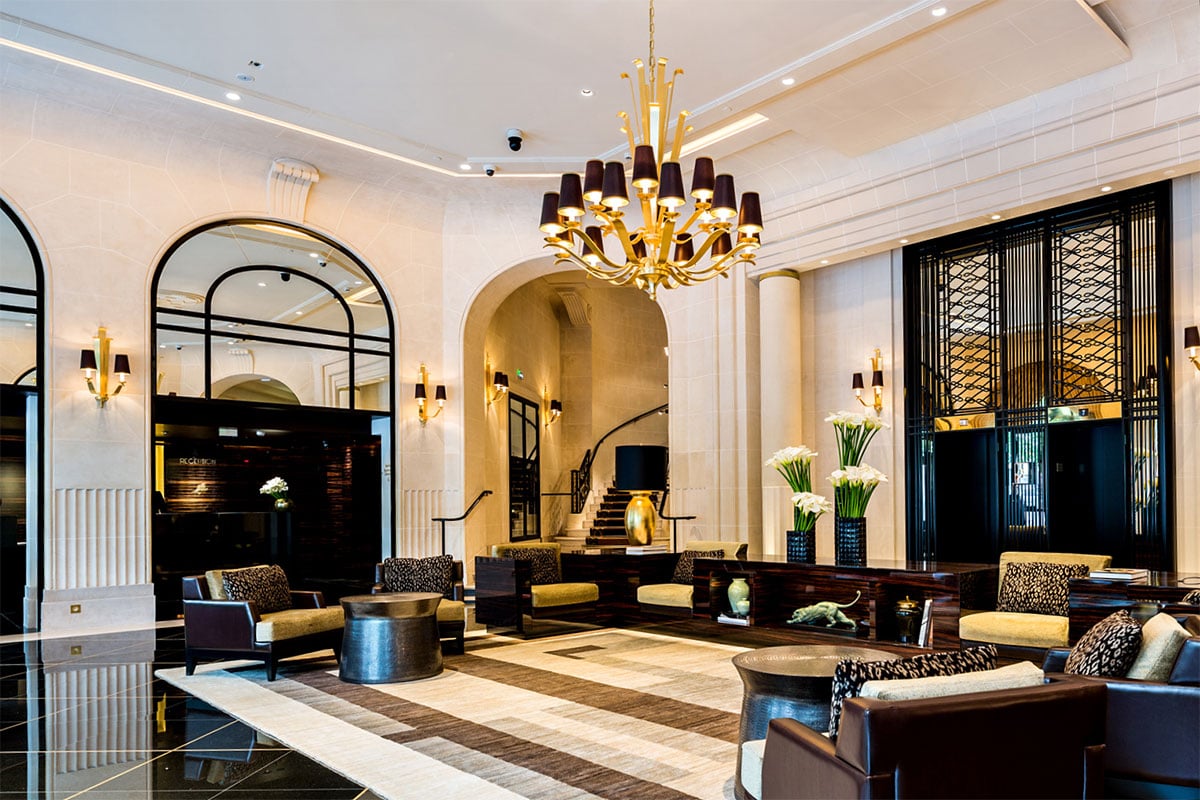Wednesday, November 18, 2015
Post-Modernism in America
In learning about post-modernism in America, one designer that I found very interesting Robert Venturi. He wrote a book called "Complexity and Contradiction in Architecture". The thought behind this book was that simplicity and logic as the cornerstone for modern design only led to boring and dull designs. When some designers were saying that "Less is More", Venturi was saying that "Less is a bore". This was a change from the previous though of modern design as being overly simplistic and stark. Venturi saw modern design as being great when complexity and contradiction were combined. This allowed for a more interesting space while still being modern. Unlike other designers, Venturi embraced historical design concepts and decorative ornamentation. One of the houses that he designed under this concept was the Vanna Venturi house in Philadelphia, this was the first example of his theory.


Venturi also created a chair that resembles the historic chippendale chair combined with a Queen Anne chair, and Art Deco, with a very modern take on it. It has more modern lines and a very interesting and complex pattern. This displays how he incorporated historic design into his modern design.
Modern Application
bathroom featuring a Venturi chair
Fire station designed by Robert Venturi
Peer Review:
Angie did a really nice job talking about post-modernism in America. I loved the picture of the Gwathmey home that she shared! She also shared some modern application pictures that really featured elements that were common to post-modern design that are being used in new contraction today.
Wednesday, November 11, 2015
"bucket list"
This weeks presentations on different pieces of architecture across the globe were really interesting and informative. One of my favorites this week was the group that did a presentation on Mexico. I liked this one because I did not expect Mexico to have so many really interesting buildings so it was a fun surprise to see the awesome architecture in Mexico, especially Mexico City. When I think of Mexico I don't really think of modern and unique architecture; I tend to think of classic spanish style architecture but this presentation proved otherwise.
One of the buildings that the group shared that I found so fascinating was the Museo Soumaya, which is a museum in Mexico City. I thought that the shape of the overall building was really cool as well as the material used to make it. A picture of this building is below is below, followed by a couple of more unique buildings in Mexico City.
This presentation made me hope that I one day get the chance to visit Mexico city and visit some of the pieces of architecture that the group shared and discover more unique architecture in the city.
One of the buildings that the group shared that I found so fascinating was the Museo Soumaya, which is a museum in Mexico City. I thought that the shape of the overall building was really cool as well as the material used to make it. A picture of this building is below is below, followed by a couple of more unique buildings in Mexico City.
This presentation made me hope that I one day get the chance to visit Mexico city and visit some of the pieces of architecture that the group shared and discover more unique architecture in the city.
Wednesday, November 4, 2015
Midcentury Modern {extra credit video}
Here is a video on how to achieve a midcentury modern look today.
Midcentury Modern
Joseph Eichler was a prominent real-estate developer in California. He was inspired by Frank Lloyd Wright and worked to develop mid-century tract housing subdivisions for the average American family. He used post and beam construction, open floor plans, glass walls, and concrete floors. His homes also featured low slope or no slope A-framed houses. Below are a few of the more than 11,000 homes he built over his career.
Eeron Saarinen was another designer of this time period, he was a Finnish/American architect and industrial designer. He worked with Charles and Ray Eames and produced furniture with Knlol. Below are a few of his pieces.
Tulip Chair
Executive Chair
Modern Applications:
Peer Review:
Haley H did a really good job with her blog this week. She provided excellent information on Modernism in America and I loved her modern examples. The modern home that she shared was really neat and I loved the architecture of it!
I also read Happy's blog on modernism in America. She also shared good information on the history of modernism in the U.S. as well as good examples of a couple of chairs that were created during that time. She posted some really interesting modern application photos of chairs that were inspired by that time period.
Wednesday, October 28, 2015
Herman Miller {extra credit video}
Here is a short film that was actually made by Ray and Charles Eames. It is a cad study of their own home after having lived in it for 5 years. Enjoy!
Herman Miller
Herman Miller rolled out their first line of modern furniture in 1933. After this herman Miller hired George Nelson to design for the company. Nelson designed the Herman Miller logo that is still used today as well as several pieces of furniture including the marshmallow sofa, coconut chair, and the nelson platform bench.
We also heard a lot about Ray and Charles Eames. Ray and Charles were a husband and wife design team who created amazing furniture that people still regularly use today. Their furniture design was inspired by a leg splint that they were commissioned to design by the U.S. military during WWII. This splint used thin plywood that was bent and pressed into the proper shape. This inspired several chairs that the Eames created out of bent and pressed plywood to create comfortable and modern chairs for residential and commercial settings. Some of their most famous chairs include their bent plywood chair, molded fiberglass rocker, a chaise lounge sleeper, and the Eamses lounge chair and ottoman.
After having been primarily involved in residential design, Herman Miller began to become involved in commercial design. Robert Propst was hired to do research on commercial design and eventually developed the action office after seeing a need for change in the working environment. The action office was not initially received as he wished, however, today their are 7 different Herman Miller models of the action office.
Herman Miller continues to be a highly successful company and over the years have bought out several companies including Geiger, Nemschoff, and Design Within Reach.
Some Herman Miller pieces:
We also heard a lot about Ray and Charles Eames. Ray and Charles were a husband and wife design team who created amazing furniture that people still regularly use today. Their furniture design was inspired by a leg splint that they were commissioned to design by the U.S. military during WWII. This splint used thin plywood that was bent and pressed into the proper shape. This inspired several chairs that the Eames created out of bent and pressed plywood to create comfortable and modern chairs for residential and commercial settings. Some of their most famous chairs include their bent plywood chair, molded fiberglass rocker, a chaise lounge sleeper, and the Eamses lounge chair and ottoman.
After having been primarily involved in residential design, Herman Miller began to become involved in commercial design. Robert Propst was hired to do research on commercial design and eventually developed the action office after seeing a need for change in the working environment. The action office was not initially received as he wished, however, today their are 7 different Herman Miller models of the action office.
Herman Miller continues to be a highly successful company and over the years have bought out several companies including Geiger, Nemschoff, and Design Within Reach.
Some Herman Miller pieces:
Eames plywood chair
Eames lounge chair and ottoman
Eames fiberglass rocker
original Action Office system
Today's use of Herman Miller:
Using Eames fiberglass chair in dining room
new Action Office system
Peer Reviews:
Wednesday, October 7, 2015
Art Deco {extra credit}
Here is a short video that gives s little tour of the Chicago Board of Trade Building, which is done in the Art Deco style.
https://www.youtube.com/watch?v=1nTSqX1mlvU
https://www.youtube.com/watch?v=1nTSqX1mlvU
Art Deco
Art Deco took place in the 1920's and was heavily inspired by the wars that were taking place around this time. This style originated in France and came to the US and other European countries when WWII began. This style was very fashion oriented, it was strongly decorative and glamorous. It features chevron patterns, folding screens, skyscraper furniture, large mirrors, gilded finishes, and prominent lighting fixtures.
The furniture of this style used rich materials like ebony, zebrawood with ivory inlays, polished metals, and glass.
One prominent designer of this time was Michel Roux-Spitz. he was a French architect who was the chief architect of Civil Buildings. Much of his work can be seen around Paris, such as the office building shown below

Roux-Spitz also designed interiors that were very Art Deco with lots of glass, mirrors, lacquered finishes, and intriguing light fixtures, such as this one seen in Paris in 1925:
The furniture of this style used rich materials like ebony, zebrawood with ivory inlays, polished metals, and glass.
One prominent designer of this time was Michel Roux-Spitz. he was a French architect who was the chief architect of Civil Buildings. Much of his work can be seen around Paris, such as the office building shown below
Roux-Spitz also designed interiors that were very Art Deco with lots of glass, mirrors, lacquered finishes, and intriguing light fixtures, such as this one seen in Paris in 1925:
Modern Application:
Today, Art Deco can be seen all across in world in homes, hotels, and clubs.
Peer Reviews:
Amanda did a great job with this blog post. She shared some really neat images that were original to the Art Deco time period as well as really good modern day application of the style.
Holli's blog was great as well. I really liked the image of the chairs that she shared, especially the chair that was created using deer hide. Her modern application was also very accurate and showed a couple of hotels and dining rooms that used the Art Deco style very well.
Subscribe to:
Posts (Atom)





















